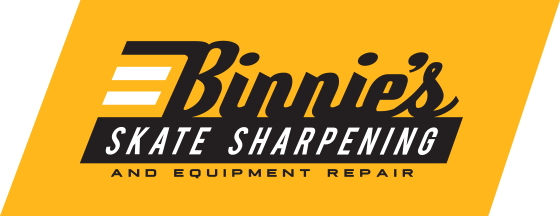Pro's Corner: How Does Ice Temp Affect Skating
While it is common knowledge that ice freezes at 32 degrees that is hardly the ideal ice to skate on. Most ice rinks will keep the air temperature at a brisk 55-65 degrees and the on-ice temperature between 17 and 29 degrees. This temperature can affect how you skate, how often you cut your steel and what hollow or profile you choose.
Hard vs. Soft
Have you ever heard someone say the ice was soft or hard and thought all ice was hard? The ice temperature can definitely affect how the ice feels under your skates – soft or hard. An ice rink that caters to figure skating will usually have ice that is considered softer with an on-ice temperature of 25 to 29 degrees. This softer ice results in more friction for launching into jumps and sticking the landings.
On the other hand, an ice rink that caters more towards hockey will have ice in the 17 to 24 degree range resulting in fast gliding and tighter turns with less resistance. Most hockey players will say they like harder ice because it creates a fluidity to their game. The ice sets up faster and is smother after ice cuts, the puck moves more expectedly without sticking or bouncing, and skating is easier due to less friction or resistance.
It is possible to have ice that is too hard and cold. Often this is found on outdoor lakes, ponds, and community rinks and is characterized by ice chipping and flaking in shards rather than making snow. If you’ve ever skated on overly hard ice, you know it is fast, but can be dangerous when it chips away!
Outside vs. Inside
Rinks, much like homes, can have a variety of levels of insulation and condensation management. This can affect the ice just as much as temperature. Some arenas are affected more than others by the outside temperature and moisture than others. If you’ve ever been to a rink where skating feels like hard ice, but yet it feels sticky (particularly in puck movement) there is probably too much humidity inside. This is most often the case during the summer months or in climates that do not have optimal winter temperatures. Understanding how the rinks you skate at react to outside temperatures and moisture levels can help you make decisions for your skates.
Change vs. Stay the Same
Most skaters will pick one hollow or profile and stick with it no matter what the ice conditions are. Some advanced players will adjust their hollow depending on where they are playing. When considering changing your hollow or profile, you need to consider the above mentioned ice conditions: hardness and humidity.
We’ll use a ½” hollow for example…
If a rink has ice in the middle range (23-26 degrees), a standard hollow would feel perfect. You would have the right amount of edge to glide ratio. You’d feel fast and in control without tiring too easy.
If the rink, however, has harder ice (17-23 degrees) you may feel that you don’t have enough bite in your edges or like your skate wants to slide out from underneath you. If this is the case, you should drop your cut to 7/16” for more bite and edge control.
On the other end of the spectrum, if the ice is softer (27-29 degrees) you may want to cut your skates less deep to 9/16” or 5/8”. This will reduce friction by creating less of a groove in the ice thus enhancing your glide and decreasing your energy consumption.
When it comes to humidity and outside environmental factors, it is critical to be able to separate “sticky” ice affected by humidity from the hardness. Hard but sticky ice will have more of an impact on the puck than your skates and a change to your hollow is not necessarily recommended. Sticky and soft ice, on the other hand, can be problematic and reducing your hollow is recommended.
Adjusting your profile for ice conditions falls much in the same vein as your hollow. Soft ice requires you to reduce the friction between your skates and the ice. Typically, to do this you would want a less aggressive profile such as a 30-60 Cag One profile or Pro Sharp Combi 10-13. For harder ice, you may want to try a profile that reduces blade contact and increases bite, turning radius and friction. A 30-50 Cag One profile or Pro Sharp Zuperior S profile will give you just the right amount of increased bite while still retaining your natural play style. Understand, though, that if you choose a more aggressive profile you may not want to change your hollow.
Cost & Time
We hear you! It can be costly and time consuming to adjust for every game at every rink. For the casual player, understanding the rink you play at the most and making small adjustments to find the perfect balance for any ice condition at the rink(s) you play at may be the best route. You can then get the same hollow every time and know that you will be good to go. For more competitive players, calling ahead to new rinks and asking about their ice temps and conditions can help you plan ahead for that big match up or tournament. If you’re still not on board with cutting and re-cutting your skates, Binnie’s would recommend carrying an extra set or two of steel, cut to different hollows and/or profiles. This way you can swap on the go to the steel that best meets each rink’s specific conditions.
Need more information?
